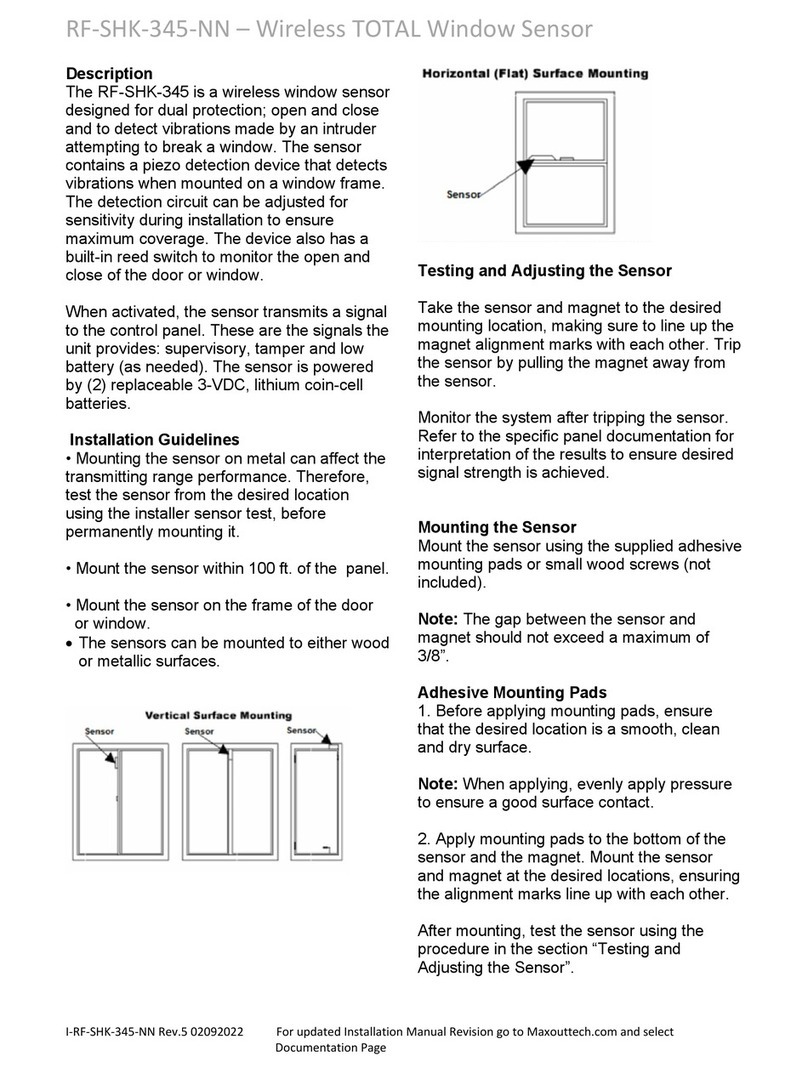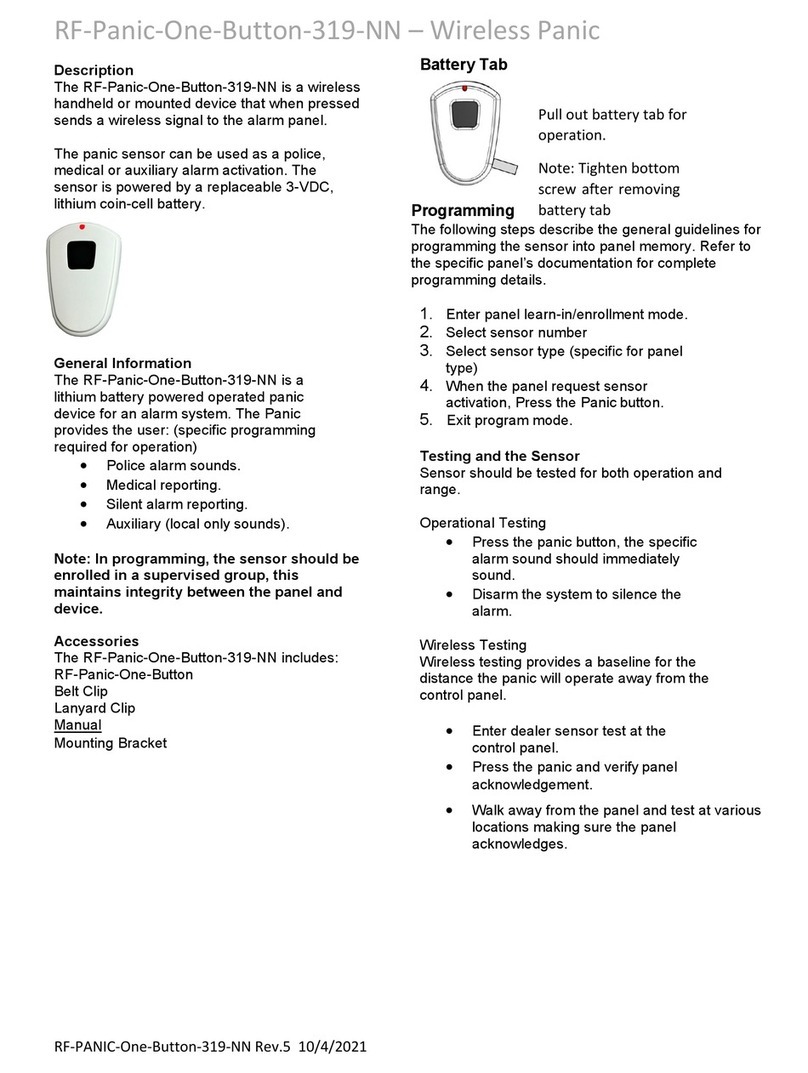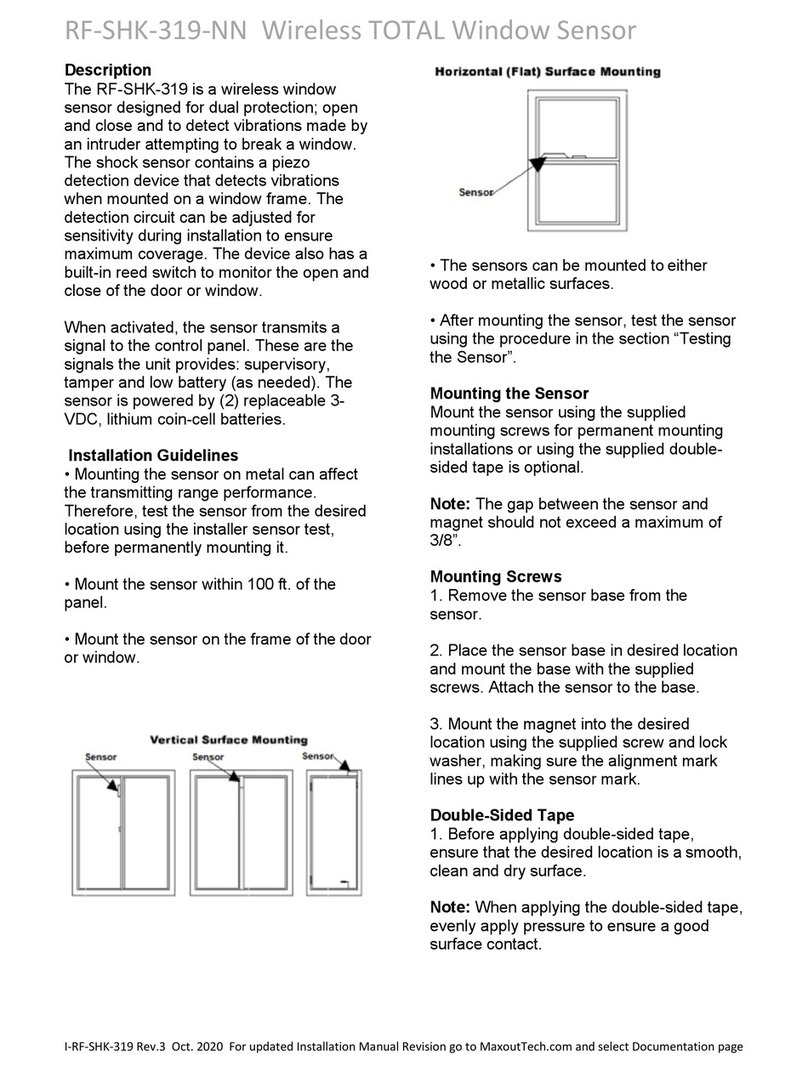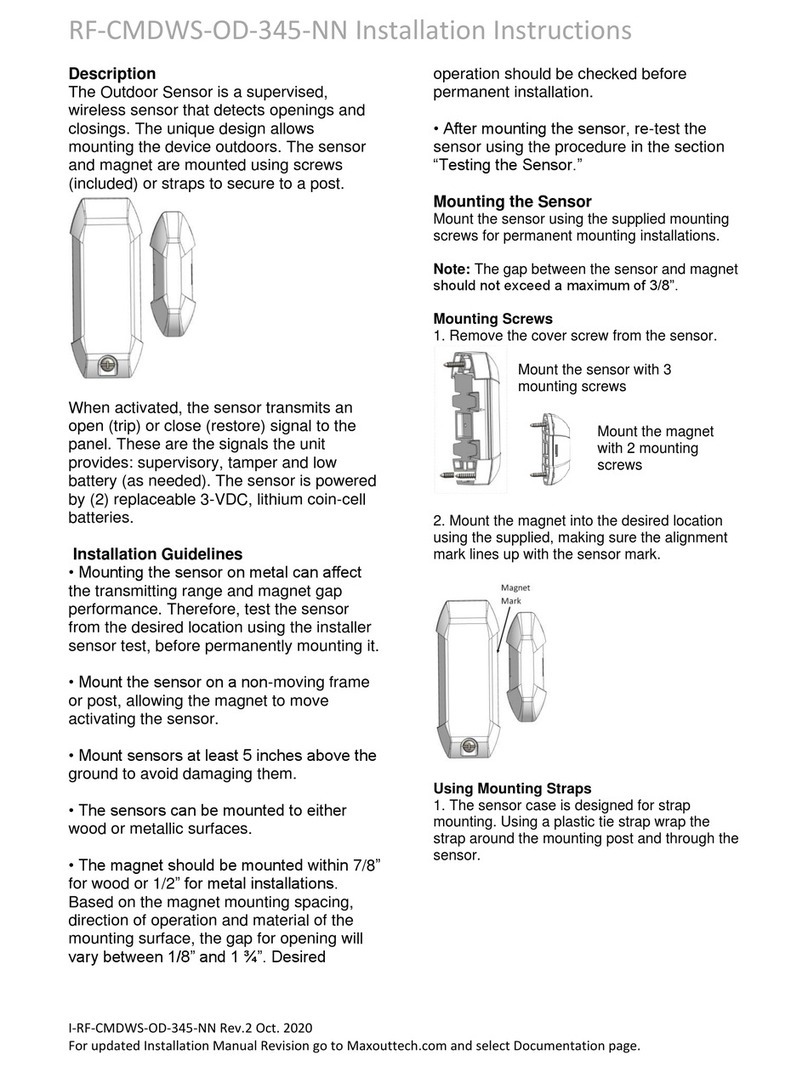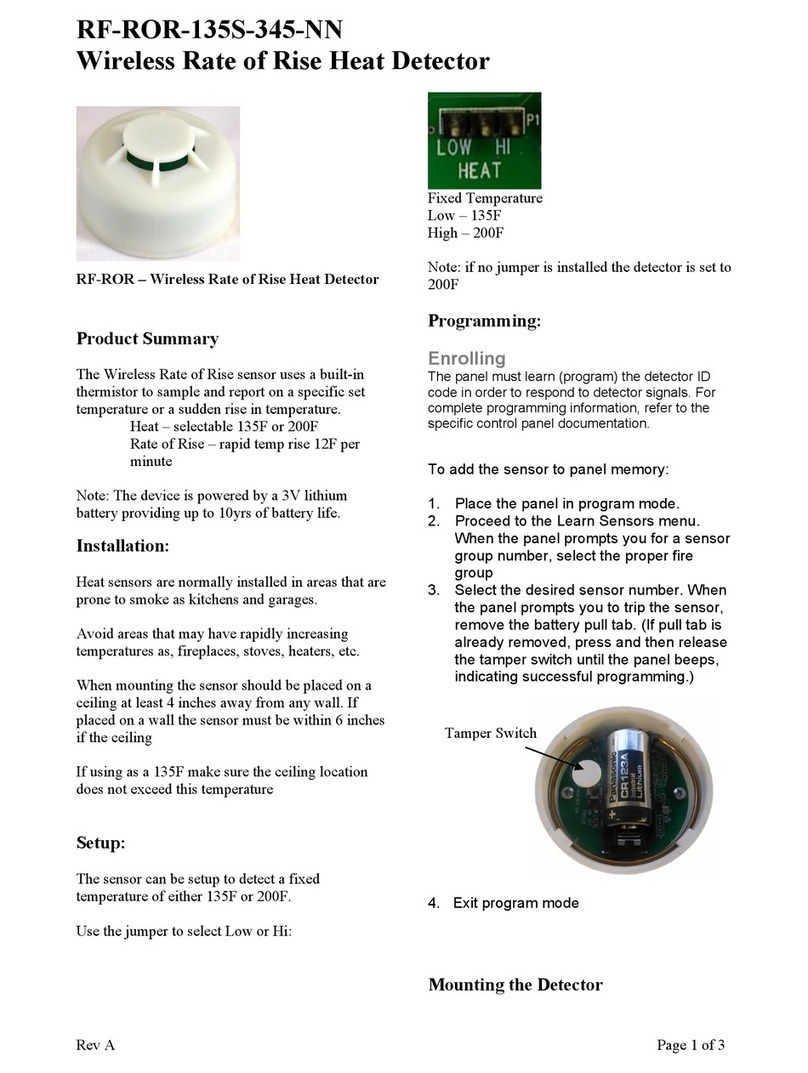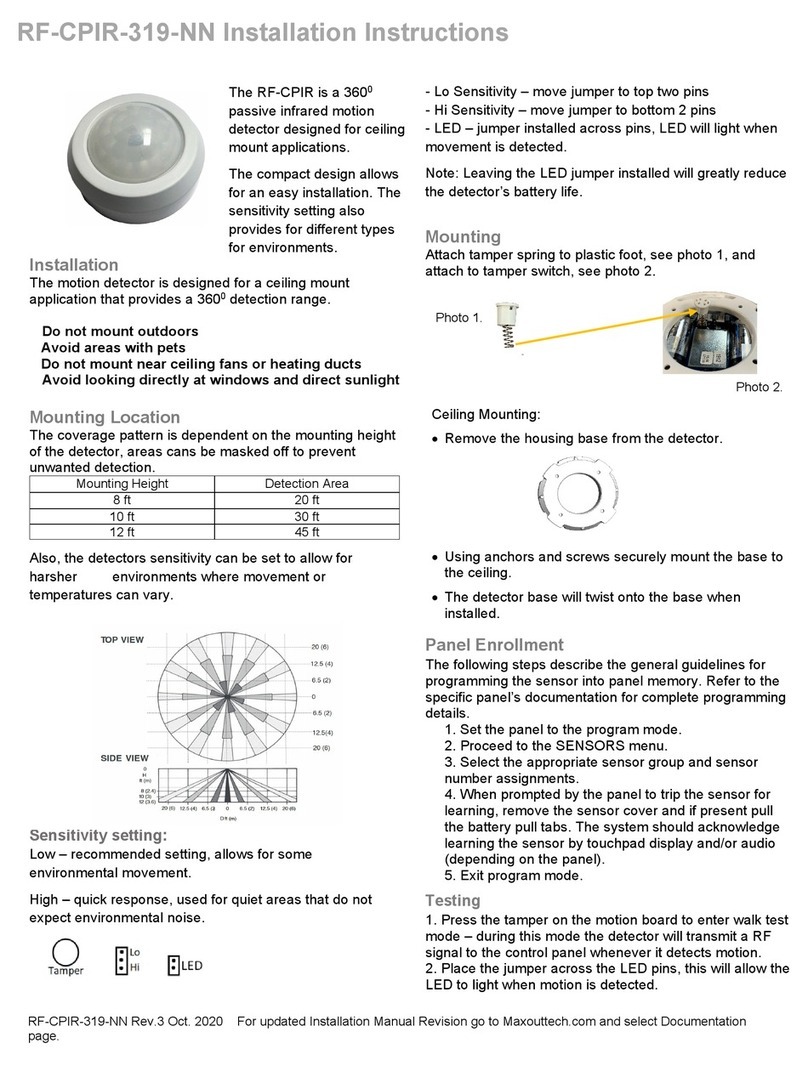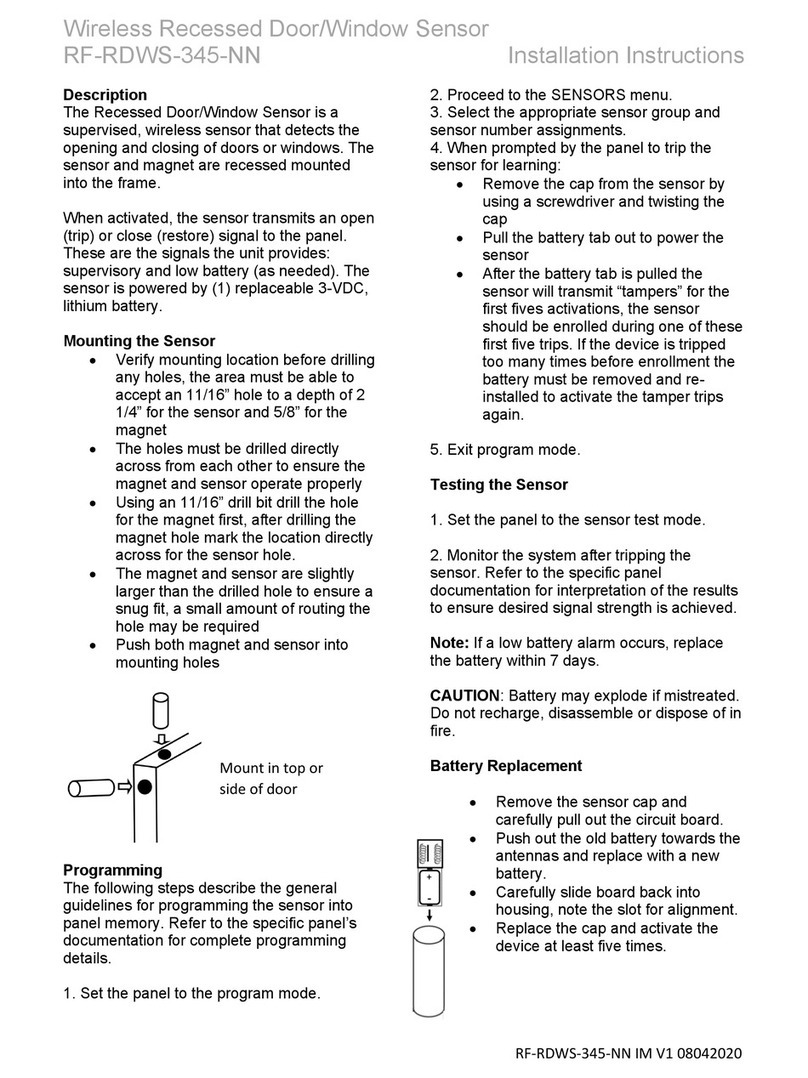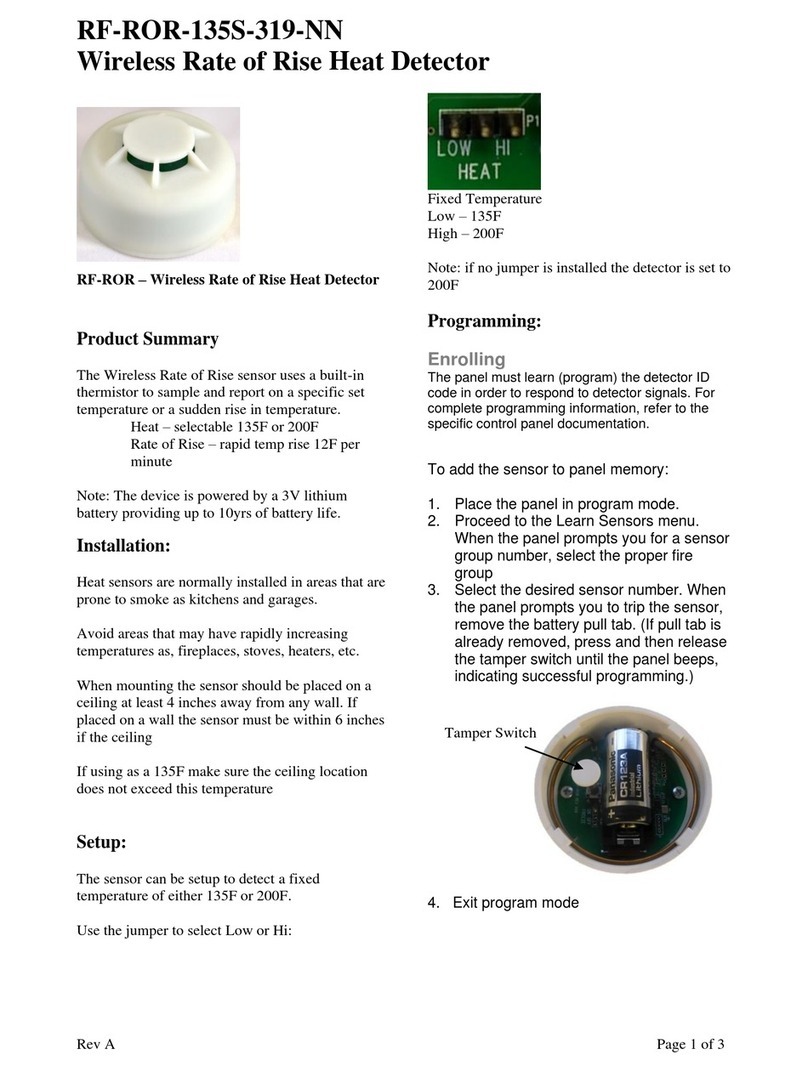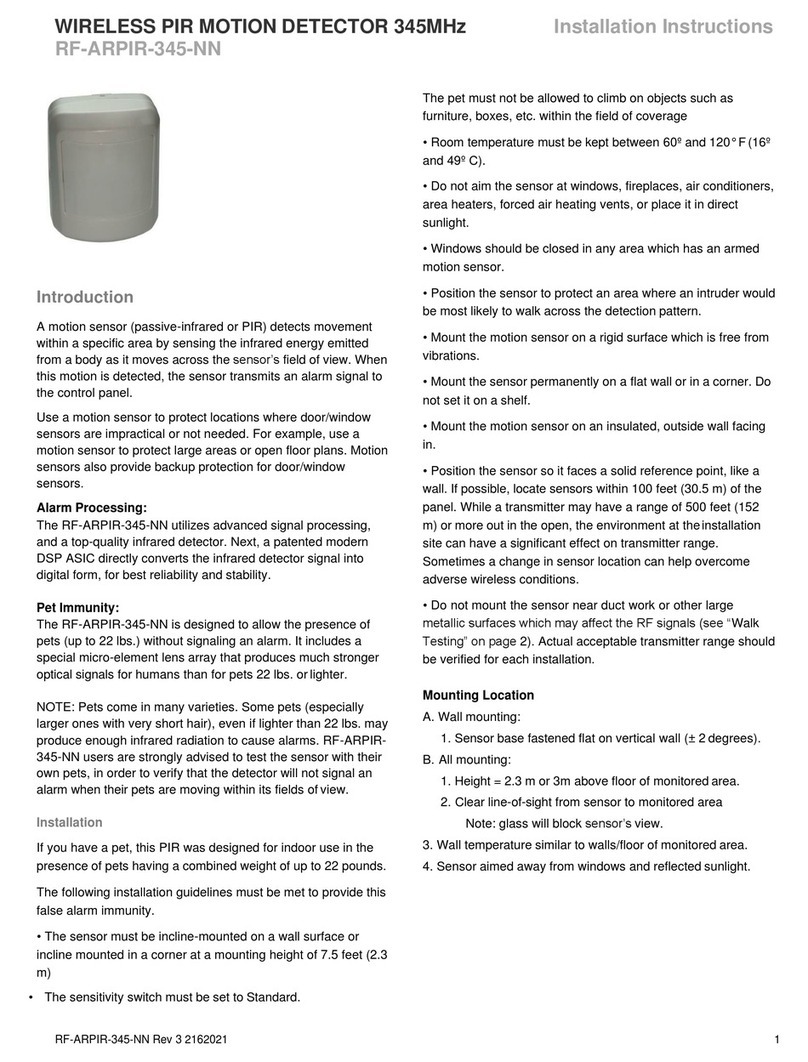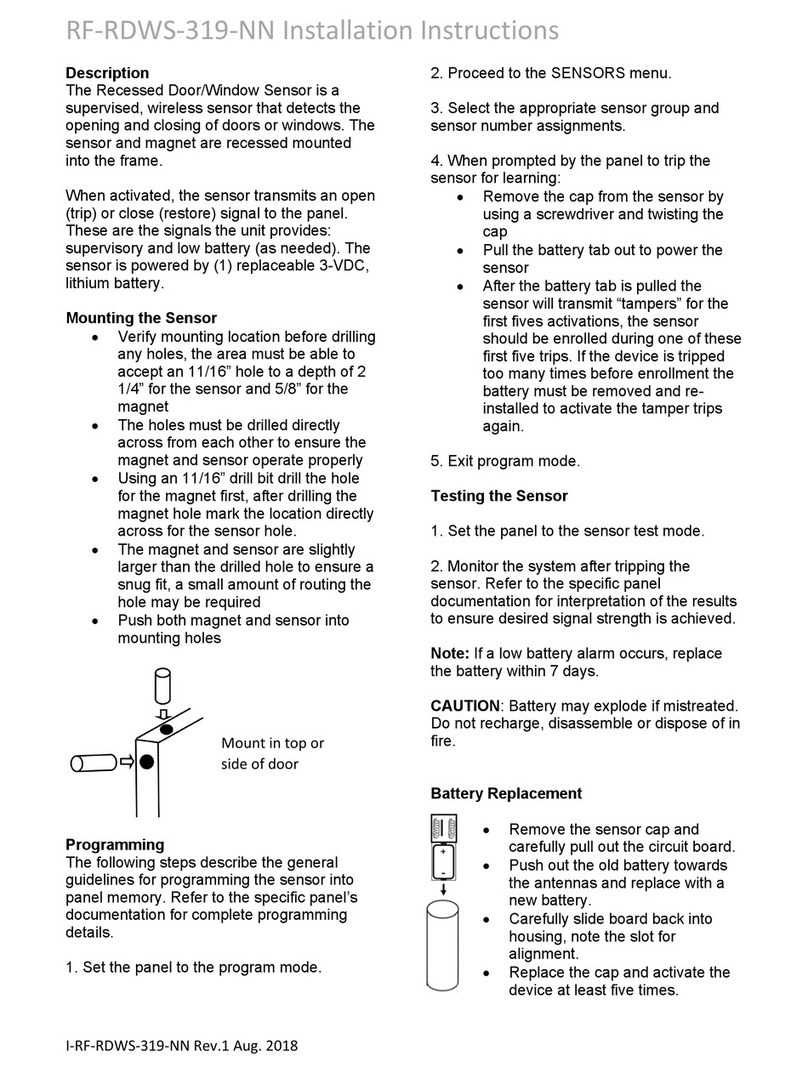
Replacing the Battery
Battery life depends on how often the detector transmits
signals, but is more dependent on the temperature of the
installation environment. When the battery voltage gets low, the
detector transmits a low battery signal to the panel. The panel
then activates trouble beeps to notify the customer that the
detector battery must be replaced. Pressing the status button
identifies the sensor with the low battery.
Replace the battery immediately when this condition occurs,
using the following battery: Panasonic CR123A 3V
Battery Disposal
The batteries used in this sensor are lithium batteries and are
not reusable. Be sure to properly dispose of used lithium
batteries according to your local hazardous waste disposal
laws.
Specifications
Compatibility: UTC®, Interlogix®, GE®,ITI®, or Qolsys®
Power source: 1 CR123A 3V Battery
Tamper switch: Sealed dome-contact
Sensitivity selectable: 2 or 3 events
Typical battery life: 4-6 years at 68°F
Transmitter frequency: 319 MHz
Operating temperature: 32°- 120°F (0°-49° C)
Storage temperature range: -30°-140° F (-34°- 60°C)
Maximum humidity: 90% Relative Humidity non-condensing
Dimensions: 3.19 x 2.4 x 1.7 inches (H x W x D)
Housing: High impact ABS
FCC / IC Statement
This equipment has been tested and found to comply with the
limits for a Class B digital device, pursuant to Part 15 of the
FCC Rules. These limits are designed to provide reasonable
protection against harmful interference in a residential
installation.
This equipment generates, uses and can radiate radio
frequency energy and, if not installed and used in accordance
with the instructions, may cause harmful interference to radio
communications. However, there is no guarantee that
interference will not occur in a particular installation.
If this equipment does cause harmful interference to radio or
television reception, which can be determined by turning the
equipment off and on, the user is encouraged to try to correct
the interference by one or more of the following measures:
• Reorient or relocate the receiving antenna.
• Increase the separation between the equipment and
receiver.
• Connect the equipment into an outlet on a circuit different
from that to which the receiver is connected.
• Consult the dealer or an experienced radio/TV technician for
help.
This device complies with Industry Canada license-exempt RSS
standard(s). Operation is subject to the following two
cond319ons: (1) this device may not cause interference, and (2)
this device must accept any interference, including interference
that may cause undesired operation of the device.
Cet appareil est conforme avec Industrie Canada exempts de
licence standard RSS (s). Son fonctionnement est soumis aux
deux cond319ons suivantes: (1) cet appareil ne doit pas
provoquer d'interférences et (2) cet appareil doit accepter toute
interférence, y compris celles pouvant causer un mauvais
fonctionnement de l'appareil.
In accordance with FCC requirements of human exposure to
radio frequency fields, the radiating element shall be installed
such that a minimum separation distance of 20 cm is maintained
from the general population.
FCC: 2ABBZ-RF-ARPIR-319
IC: 11817A-RFARPIR319
This device complies with Part 15 of the FCC Rules. Operation is
subject to the following two conditions: (1) This device may not
cause harmful interference, and (2) this device must accept any
interference received, including interference that may cause
undesired operation. Changes or modifications not expressly
approved by the party responsible for compliance could void the
user's authority to operate the equipment.
This Class B digital apparatus complies with Canadian ICES-3B.
Cet appareil numérique de la classe B est conforme à la norme
NMB-003 du Canada.
MANUFACTURER HEREBY DISCLAIMS ALL WARRANTIES
AND REPRESENTATIONS, WHETHER EXPRESS, IMPLIED,
STATUTORY OR OTHERWISE INCLUDING (BUT NOT
LIMITED TO) ANY WARRANTIES OF MERCHANTABILITY OR
FITNESS FOR A PARTICULAR PURPOSE WITH RESPECT
TO THESE PRODUCTS AND ANY RELATED SOFTWARE.
MANUFACTURER FURTHER DISCLAIMS ANY OTHER
IMPLIED WARRANTY UNDER THE UNIFORM COMPUTER
INFORMATION TRANSACTIONS ACT OR SIMILAR LAW AS
ENACTED BY ANY STATE.
(USA only) SOME STATES DO NOT ALLOW THE EXCLUSION
OF IMPLIED WARRANTIES, SO THE ABOVE EXCLUSION
MAY NOT APPLY TO YOU. THIS WARRANTY GIVES YOU
SPECIFIC LEGAL RIGHTS AND YOU MAY ALSO HAVE
OTHER LEGAL RIGHTS THAT VARY FROM STATE TO
STATE.
MANUFACTURER MAKES NO REPRESENTATION,
WARRANTY, COVENANT OR PROMISE THAT ITS ALARM
PRODUCTS AND/OR RELATED SOFTWARE (I) WILL NOT
BE HACKED, COMPROMISED AND/OR CIRCUMVENTED;
(II) WILL PREVENT, OR PROVIDE ADEQUATE WARNING
OR PROTECTION FROM, BREAK-INS, BURGLARY,
ROBBERY, FIRE; OR (III) WILL WORK PROPERLY IN ALL
ENVIRONMENTS AND APPLICATIONS.
RF-ARPIR-319-NN Rev 3 2162021 3
